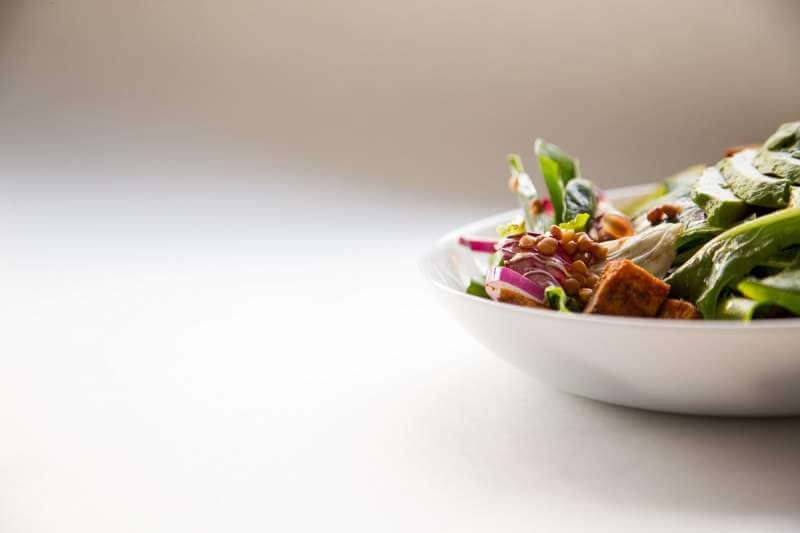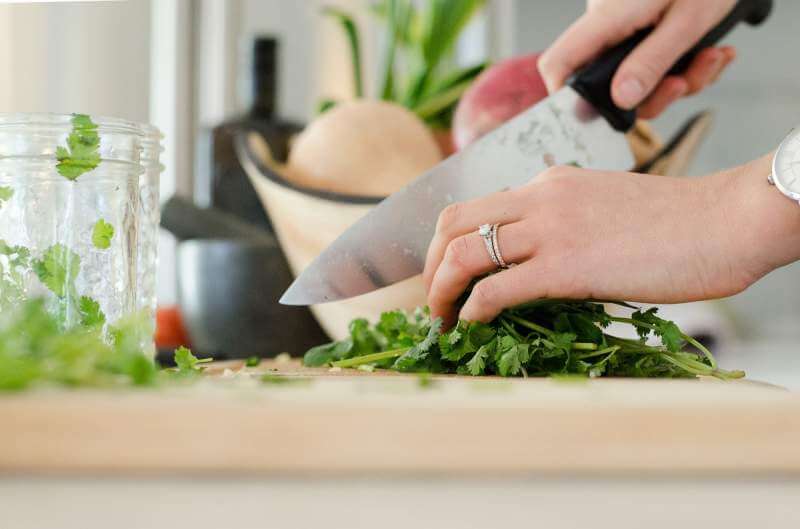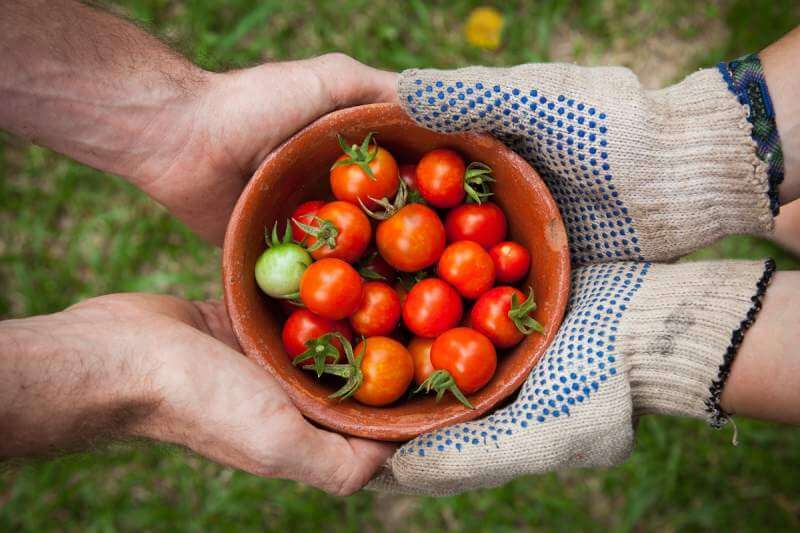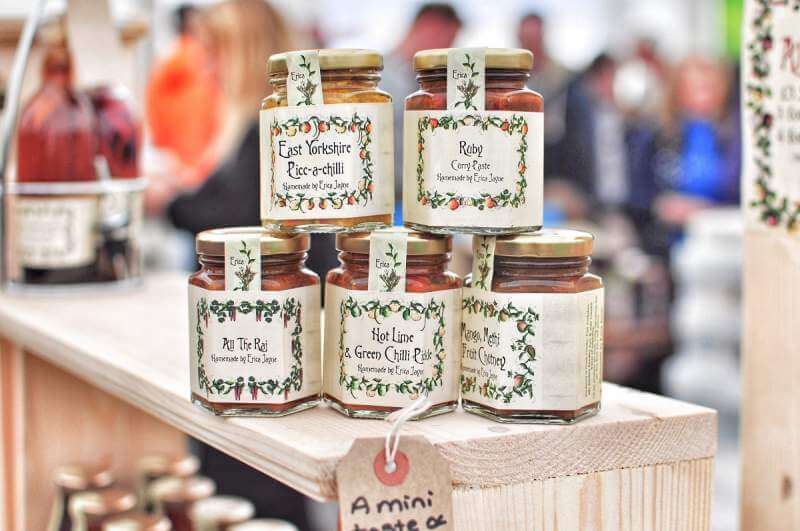Eating healthy is getting more and more popular, and that’s a great thing. Unless, you might be thinking, if it’s not something that comes to you naturally! But it sure doesn’t have to be complicated, and it usually isn’t. But even if you’re a complete beginner, it’s possible to achieve a healthy diet pattern that will be easy to follow on an everyday basis.
You might be perfectly healthy and living off burgers, so what difference does it make? Well, if that’s the case, you’re probably quite young, when our bodies are forgiving – but they also remember very well, and won’t be as forgiving in the future. Eating a balanced diet can and will make you look and feel better and healthier. Give it a try and you’ll be convinced after a while. So, where to start?
What You Need to Know About Balanced Diet
 Balance is a word that’s thrown around quite a lot recently, but not without reason. We all need a balance of carbohydrates, fiber, protein, fat and vitamins and minerals in our diet in order to keep a healthy body. Some popular diets can suggest cutting one source of macronutrients, but it’s actually not a good idea in the long run. You don’t need to eliminate a whole category of food – you just need to be mindful about what you’re eating and select the best options from each category.
Balance is a word that’s thrown around quite a lot recently, but not without reason. We all need a balance of carbohydrates, fiber, protein, fat and vitamins and minerals in our diet in order to keep a healthy body. Some popular diets can suggest cutting one source of macronutrients, but it’s actually not a good idea in the long run. You don’t need to eliminate a whole category of food – you just need to be mindful about what you’re eating and select the best options from each category.
We need protein for energy, mood and cognitive functions. The best sources of protein are meat, eggs and dairy, but you can get some even if you don’t consume animal products. When it comes to fat, don’t run away from it. Some fat is good and can protect your brain and heart. For the best sources, introduce butter, avocado and nuts to your regimen. Carbs are one of your body’s main sources of energy. But it doesn’t mean you should munch on muffins to get it – most of this energy should come from complex carbohydrates, contained in vegetables, rice, pasta, potatoes, oats, quinoa, other cereals, and fruit. The main goal is to eat everything, but in moderation. The balanced diet you strive for has room for cakes and burgers, but won’t allow you to live off them.
Make the Right Changes: Start Small
 The path to a balanced diet usually isn’t an overnight miracle, though many hope it can be that easy. They throw out all the unhealthy foods and declare their worship for chicken breast and broccoli. Well, there’s nothing wrong with these two – but if you’re not a worshiper already, we doubt anything can make you love them. In fact, you’re bound to give up quickly, because changes like these take time and are built slowly. Why not add more vegetables first? How about portion control? Or cooking more meals at home instead of takeaway? Once you’ve mastered the first steps, it will be easy to introduce some others.
The path to a balanced diet usually isn’t an overnight miracle, though many hope it can be that easy. They throw out all the unhealthy foods and declare their worship for chicken breast and broccoli. Well, there’s nothing wrong with these two – but if you’re not a worshiper already, we doubt anything can make you love them. In fact, you’re bound to give up quickly, because changes like these take time and are built slowly. Why not add more vegetables first? How about portion control? Or cooking more meals at home instead of takeaway? Once you’ve mastered the first steps, it will be easy to introduce some others.
Go Adventurous: Grow Your Own Vegetables
 Veggies and fruit are low in calories and nutrient dense, which makes them excellent food. The old saying advises five servings of these, and knowing that a serving can be as small as one apple or banana or a small salad, it is very doable! But apart from their nutritional benefits, vegetables can give you a sense of joy, achievement and responsibility to the planet if you decide to grow your own. Doing so is a foolproof way to eat more vegetables – and then you’ll think twice before throwing any away, because you’ll know how much work went into growing a single tomato! Maybe you feel you don’t have time for gardening, however, growing your own food is not only fairly easy (no advanced biology knowledge needed!), but it will keep you outside in the sun and also make you move. Start small; you don’t have to have a plantation right away. Get yourself some basic gardening tools such as Hoselink, and plant things you’ll actually look forward to eating. So if bell peppers aren’t your jam, you’re allowed to skip them!
Veggies and fruit are low in calories and nutrient dense, which makes them excellent food. The old saying advises five servings of these, and knowing that a serving can be as small as one apple or banana or a small salad, it is very doable! But apart from their nutritional benefits, vegetables can give you a sense of joy, achievement and responsibility to the planet if you decide to grow your own. Doing so is a foolproof way to eat more vegetables – and then you’ll think twice before throwing any away, because you’ll know how much work went into growing a single tomato! Maybe you feel you don’t have time for gardening, however, growing your own food is not only fairly easy (no advanced biology knowledge needed!), but it will keep you outside in the sun and also make you move. Start small; you don’t have to have a plantation right away. Get yourself some basic gardening tools such as Hoselink, and plant things you’ll actually look forward to eating. So if bell peppers aren’t your jam, you’re allowed to skip them!
Read Labels
 You don’t have to be obsessed with calorie counting; but reading the labels on your food is so much more than that! If you’re aware what kinds of macro and micronutrients you need, and which ones are better to skip, reading labels can become quite habitual and it helps you make better decisions. For example, you might think that some plain savory snacks are healthy, but once you check the label, it turns out they are so calorie-dense that you might have a chocolate bar and enjoy more. All those versions of food with bright letters on the front that say low-fat actually can have much more sugar than regular versions, and so forth. Don’t be lazy and turn the product to check the label. Over time, you’ll get to remembering things fairly easy; but for starters, compare similar foods and opt for those that will give you more nutrients – sometimes that can even mean fewer calories.
You don’t have to be obsessed with calorie counting; but reading the labels on your food is so much more than that! If you’re aware what kinds of macro and micronutrients you need, and which ones are better to skip, reading labels can become quite habitual and it helps you make better decisions. For example, you might think that some plain savory snacks are healthy, but once you check the label, it turns out they are so calorie-dense that you might have a chocolate bar and enjoy more. All those versions of food with bright letters on the front that say low-fat actually can have much more sugar than regular versions, and so forth. Don’t be lazy and turn the product to check the label. Over time, you’ll get to remembering things fairly easy; but for starters, compare similar foods and opt for those that will give you more nutrients – sometimes that can even mean fewer calories.
Find the Alternatives
 Once you’ve learned how to read labels and what food shouldn’t be consumed on a daily basis, find the alternatives for those tasty pieces you’ve been grabbing a lot. For example, make muffins with ground oats instead of white flour. You can also substitute white flour with whole grain flour when baking. If you like corn flakes for breakfast, swap them for bran flakes. Instead of heavily processed meats for breakfast, have a slice or two of lean ham and some eggs. Try adding chicken on your pizza instead of pepperoni. Whenever possible, swap red meat with fish or chicken.
Once you’ve learned how to read labels and what food shouldn’t be consumed on a daily basis, find the alternatives for those tasty pieces you’ve been grabbing a lot. For example, make muffins with ground oats instead of white flour. You can also substitute white flour with whole grain flour when baking. If you like corn flakes for breakfast, swap them for bran flakes. Instead of heavily processed meats for breakfast, have a slice or two of lean ham and some eggs. Try adding chicken on your pizza instead of pepperoni. Whenever possible, swap red meat with fish or chicken.
Cook Your Own Food
 Apart from growing your own food and controlling the pesticides and toxins, another way of knowing exactly what you consume is to cook your own food. When cooking, you won’t be adding chemical additives and way too much sugar – and that’s what’s probably contained in your takeaway fried chicken or just pre packed food in a supermarket. If you don’t have time for cooking every day, try dedicating Sunday morning to make some extra portions that you can keep in the fridge or freeze and then use on the weekdays.
Apart from growing your own food and controlling the pesticides and toxins, another way of knowing exactly what you consume is to cook your own food. When cooking, you won’t be adding chemical additives and way too much sugar – and that’s what’s probably contained in your takeaway fried chicken or just pre packed food in a supermarket. If you don’t have time for cooking every day, try dedicating Sunday morning to make some extra portions that you can keep in the fridge or freeze and then use on the weekdays.
When it comes to a balanced diet, it’s important to know that food, in itself, is not predominantly good or bad; it’s how you use it and how much of it. You’ll want chocolate from time to time, and don’t deprive yourself of it; just reduce it, okay? Portion control is also something you may want to consider, because even apples, if eaten a kilo at once, can make you feel bloated and sluggish! And of course, pay attention to how you feel. When eating in moderation, you’ll feel great, and much better than with a diet of junk food. Nurture that feeling, and it will make most of your diet easy. And when it’s not – just reach for that chocolate bar! Getting back on track afterward won’t be hard.
